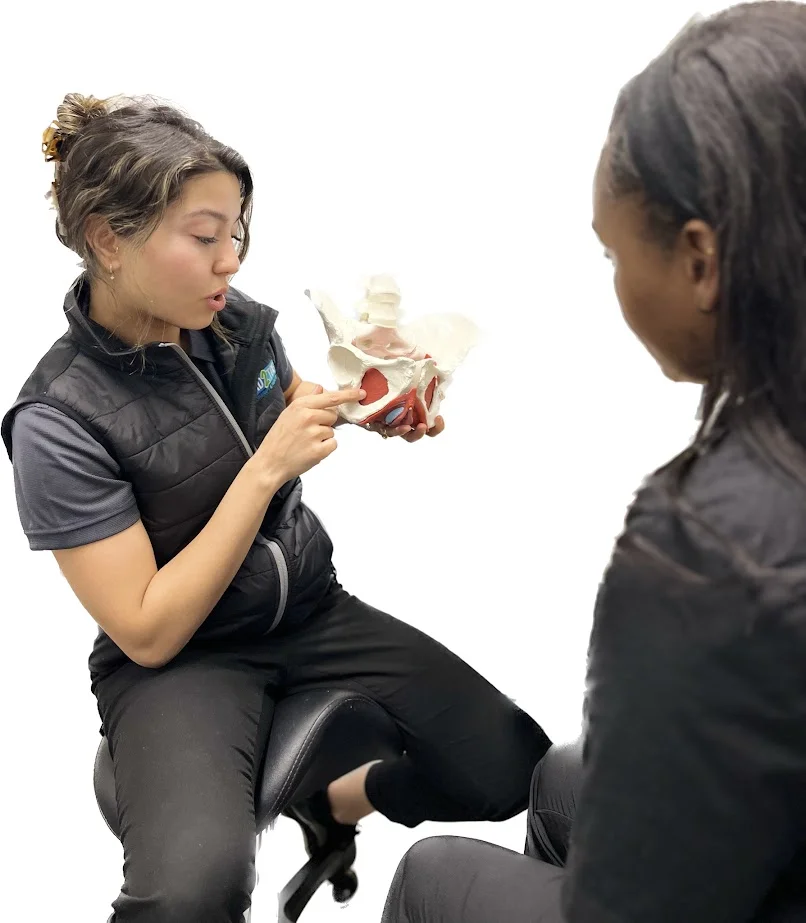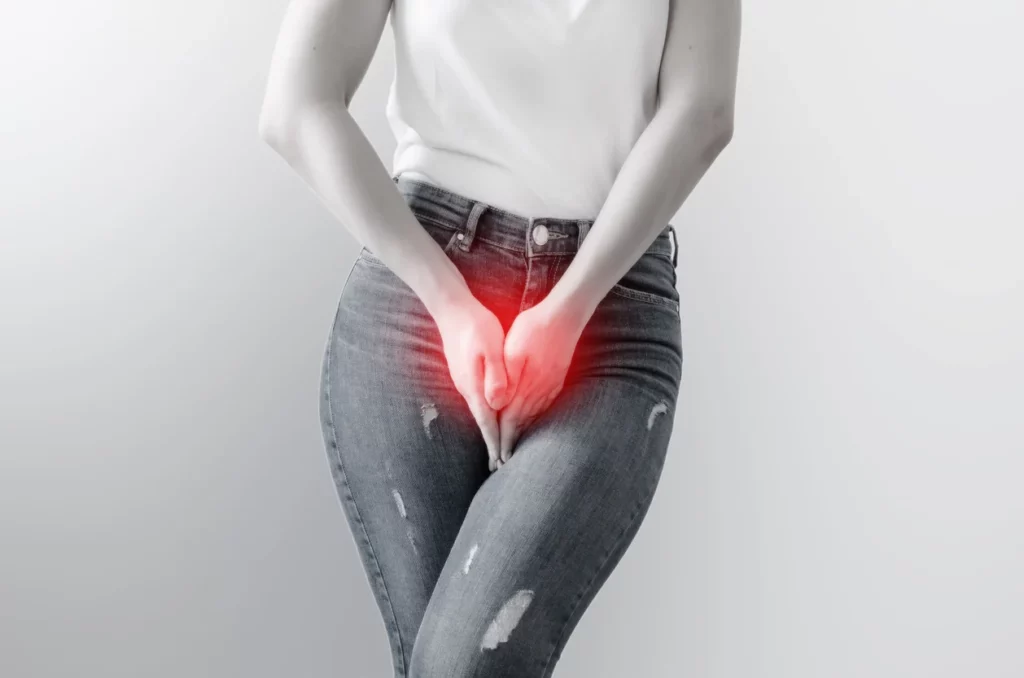Pelvic Girdle Pain

Pelvic girdle pain (PGP) is a common condition that affects a significant number of people, both men and women, across different age groups. It refers to pain in the pelvic girdle, which is the area of the body that includes the pelvis, hips, and lower back. PGP can be caused by a variety of factors and can range from mild discomfort to severe pain that can significantly impact an individual's quality of life. In this comprehensive article, we will delve into an overview of PGP, discuss its causes and symptoms, explore the various treatment options available, and highlight the crucial role of physiotherapy in managing this condition.
Causes of Pelvic Girdle Pain
There are several potential causes of PGP, and understanding these can help in the effective management and treatment of the condition. One common cause is pregnancy. As the body prepares for childbirth, hormones are released that loosen the ligaments in the pelvic area. This can lead to instability and pain in the pelvic girdle. However, it's important to note that PGP is not exclusive to pregnant individuals. It can also occur in individuals who are not pregnant, making it a condition that can affect anyone.
Other causes of PGP include trauma or injury to the pelvic area. This could be due to a fall, an accident, or any event that puts undue pressure or strain on the pelvic region. Arthritis, a condition characterized by inflammation of the joints, can also lead to PGP. Additionally, muscle imbalances, where some muscles are weaker than others, can contribute to the development of PGP. Understanding these causes is the first step towards effective management and treatment of the condition.
Symptoms of Pelvic Girdle Pain
The symptoms of PGP can vary greatly from person to person, making it a condition that requires a personalized approach to treatment. Some individuals may experience a dull ache or discomfort in the pelvic area, while others may have sharp, shooting pains. The pain may be localized to one side of the pelvis or may radiate to the hips, lower back, or thighs. This can make it difficult to pinpoint the exact location of the pain, further complicating the diagnosis and treatment process.
PGP can also make it difficult to perform everyday activities such as walking, standing, or sitting for long periods of time. This can significantly impact an individual's quality of life, making it a condition that requires prompt attention and treatment. In severe cases, PGP can even lead to mobility issues, making it a potentially debilitating condition.
Treatment Options for Pelvic Girdle Pain
The treatment of PGP depends on the underlying cause and the severity of the symptoms. In some cases, simple self-care measures can help alleviate the pain. These may include resting, applying heat or cold packs to the affected area, and taking over-the-counter pain medications. However, these measures are often not enough to fully manage the condition, especially in more severe cases.
Physiotherapy is often recommended for individuals with PGP. A physiotherapist can provide exercises and stretches to strengthen the muscles in the pelvic girdle and improve stability. They may also use manual therapy techniques to reduce pain and improve mobility. This can be particularly beneficial for individuals who have mobility issues due to PGP.
Physiotherapy for Pelvic Girdle Pain
Physiotherapy plays a crucial role in the management of PGP. A physiotherapist will assess the individual's condition and develop a personalized treatment plan. This may include a combination of exercises, manual therapy, and education. The goal of physiotherapy is to reduce pain, improve function, and enhance the individual's quality of life.
Pelvic Floor Exercises
One of the key components of physiotherapy for PGP is pelvic floor exercises. The pelvic floor muscles play an important role in supporting the pelvic girdle. Weak or imbalanced pelvic floor muscles can contribute to PGP. A physiotherapist can teach individuals how to properly engage and strengthen these muscles through exercises such as Kegels. Strengthening the pelvic floor can help improve stability and reduce pain in the pelvic girdle.
Stretches and Strengthening Exercises
In addition to pelvic floor exercises, a physiotherapist may prescribe stretches and strengthening exercises for the muscles in the pelvic girdle. These exercises can help improve flexibility, reduce muscle imbalances, and enhance stability. Common exercises may include hip stretches, glute bridges, and core strengthening exercises. It's important to perform these exercises under the guidance of a physiotherapist to ensure proper form and technique, and to prevent further injury.
Manual Therapy Techniques
Physiotherapists may also use manual therapy techniques to treat PGP. These techniques may include joint mobilizations, soft tissue massage, and trigger point release. Manual therapy can help reduce pain, improve joint mobility, and release tension in the muscles surrounding the pelvic girdle. It is typically performed by a trained physiotherapist and can provide immediate relief for individuals with PGP.
Is it normal to have pelvic pain at 28 weeks pregnant?
It is normal to experience pelvic pain during pregnancy, including at 28 weeks. As the pregnancy progresses, the weight of the growing baby and changes in the body can put pressure on the pelvic area, leading to discomfort and pain. This can be due to the stretching of ligaments, hormonal changes, the position of the baby, or the increased blood flow to the pelvic region. It is always a good idea to consult with your healthcare provider to ensure that the pain is within the normal range and to explore any potential underlying causes.
Is pelvic bone pain common during pregnancy?
Pelvic bone pain is common during pregnancy. As the pregnancy progresses, the pelvic bones and joints undergo changes and loosen to prepare for childbirth. This can lead to discomfort and pain in the pelvic area. The hormones produced during pregnancy also contribute to the relaxation of the pelvic joints and ligaments, which can further exacerbate the pain. It is important to note that while pelvic bone pain is common, it is always recommended to consult with your healthcare provider to ensure that the pain is within the normal range and to rule out any potential underlying causes.
What are the causes of inner thigh pain during pregnancy?

Inner thigh pain during pregnancy can have several causes. Here are some possible reasons for experiencing inner thigh pain during pregnancy:
1. Round ligament pain: The round ligaments, which support the uterus, can become stretched and strained during pregnancy, causing pain in the inner thigh.
2. Pelvic pressure: The growing uterus can put pressure on the pelvic area, including the inner thighs, leading to discomfort and pain.
3. Sciatica: Sciatica is a condition that occurs when the sciatic nerve, which runs from the lower back down to the legs, becomes compressed. This compression can cause pain in the lower back, buttocks, and thighs, including the inner thigh.
4. Varicose veins: Pregnancy can increase the risk of developing varicose veins, which are swollen and twisted veins. Varicose veins can cause pain and discomfort in various parts of the body, including the inner thighs.
5. Muscle strain: The changes in weight and posture during pregnancy can strain the muscles in the pelvic area, leading to pain in the inner thighs.
It is important to consult with your healthcare provider to determine the exact cause of your inner thigh pain during pregnancy and to receive appropriate treatment and management strategies.
What are the functions of the pelvic girdle?
The pelvic girdle serves several important functions in the human body. It provides support and stability to the spine and upper body, connects the lower limbs to the axial skeleton, and protects the reproductive organs, urinary bladder, and part of the digestive system. Additionally, the pelvic girdle plays a crucial role in locomotion, as it serves as an attachment point for various muscles involved in walking, running, and other movements. The pelvic girdle is also essential during childbirth, as it provides a stable base for the uterus and helps facilitate the passage of the baby through the birth canal.
What causes persistent pelvic pain?
Persistent pelvic pain can be caused by various factors. Some common causes of persistent pelvic pain include:
1. Pelvic inflammatory disease (PID): This is an infection of the female reproductive organs, usually caused by sexually transmitted bacteria. PID can cause inflammation and pain in the pelvic region.
2. Endometriosis: This is a condition in which the tissue that lines the uterus grows outside of the uterus. Endometriosis can cause pelvic pain, especially during menstruation.
3. Fibroids: These are noncancerous growths that develop in or around the uterus. Large fibroids can cause pelvic pain and pressure.
4. Irritable bowel syndrome (IBS): This is a common digestive disorder that can cause abdominal pain, bloating, and changes in bowel habits. Some people with IBS also experience pelvic pain.
5. Urinary tract infections (UTIs): Infections in the urinary tract, such as bladder infections, can cause pelvic pain and discomfort.
6. Ovarian cysts: These are fluid-filled sacs that develop on the ovaries. Large cysts or cysts that rupture can cause pelvic pain.
7. Musculoskeletal issues: Conditions such as pelvic floor dysfunction, muscle imbalances, and joint problems can also cause persistent pelvic pain.
It's important to consult with a healthcare professional for an accurate diagnosis and appropriate treatment plan if you are experiencing persistent pelvic pain. They can help identify the underlying cause and recommend the most suitable treatment options.
Conclusion
Pelvic girdle pain is a common condition that can cause significant discomfort and impact daily activities. While it is often associated with pregnancy, PGP can also occur in individuals who are not pregnant. Treatment options for PGP include self-care measures, medication, and physiotherapy. Physiotherapy, in particular, plays a crucial role in managing PGP by providing exercises, stretches, and manual therapy techniques to reduce pain and improve function. If you are experiencing pelvic girdle pain, it is recommended to consult with a healthcare professional, such as a physiotherapist, for an accurate diagnosis and appropriate treatment plan. With the right treatment and management, individuals with PGP can lead a comfortable and active life.








